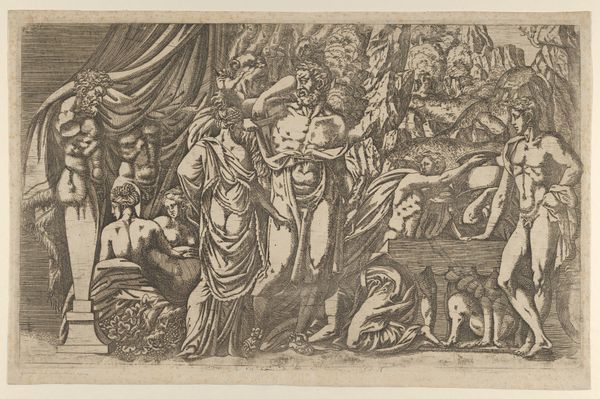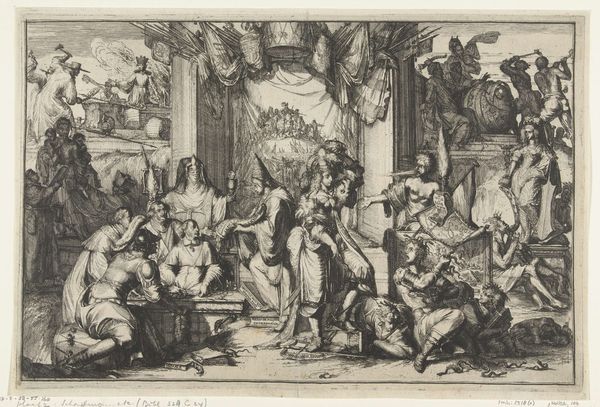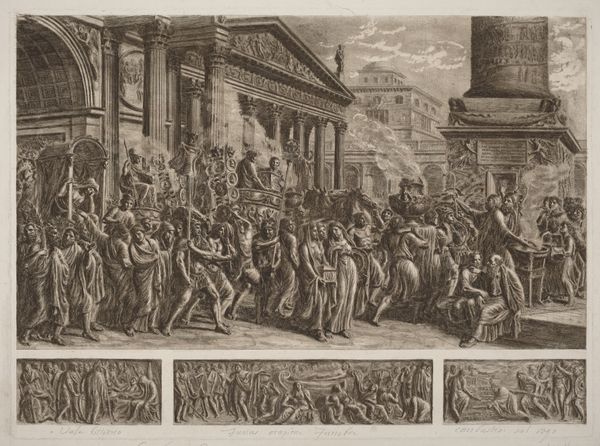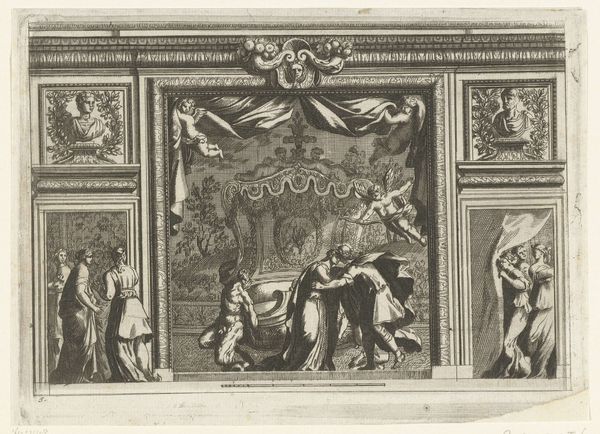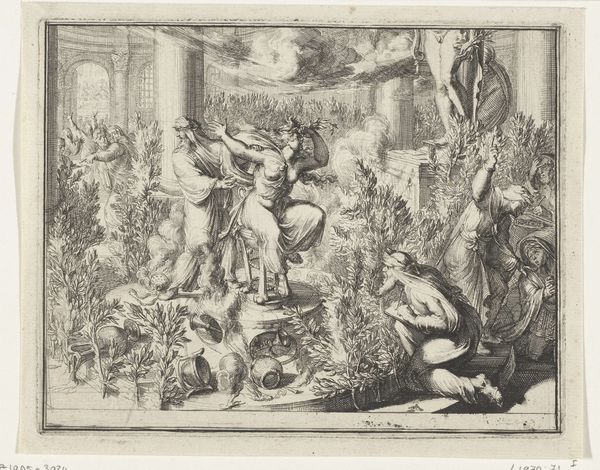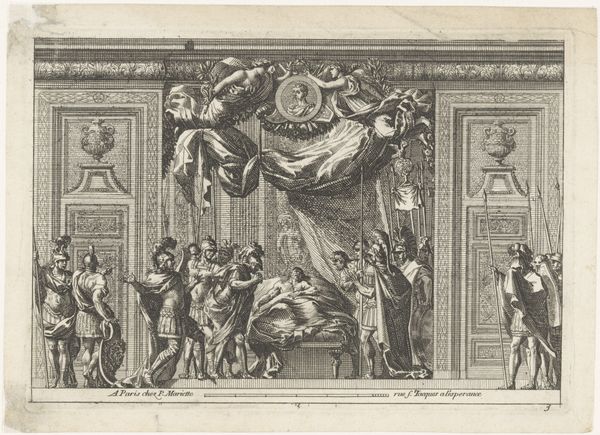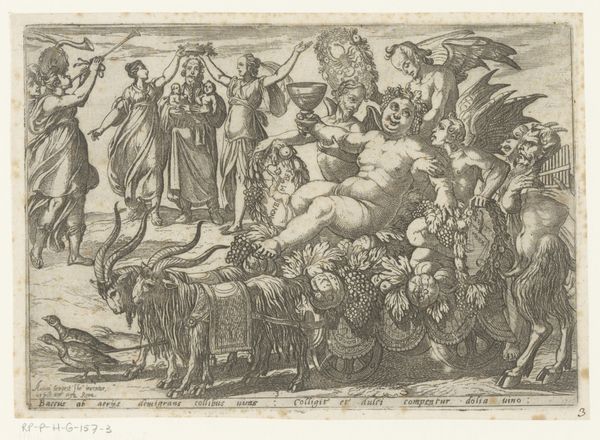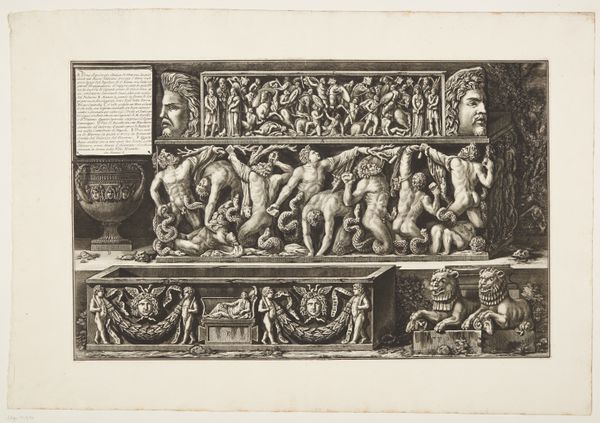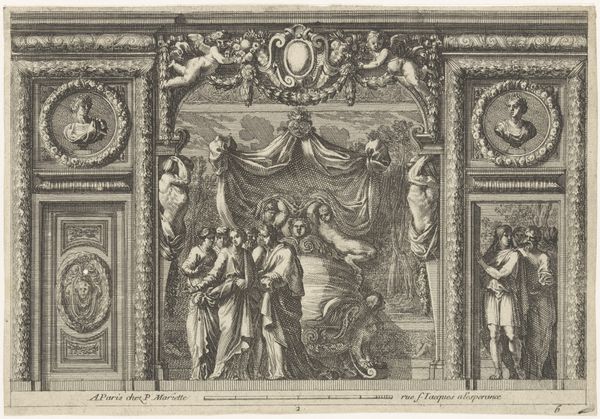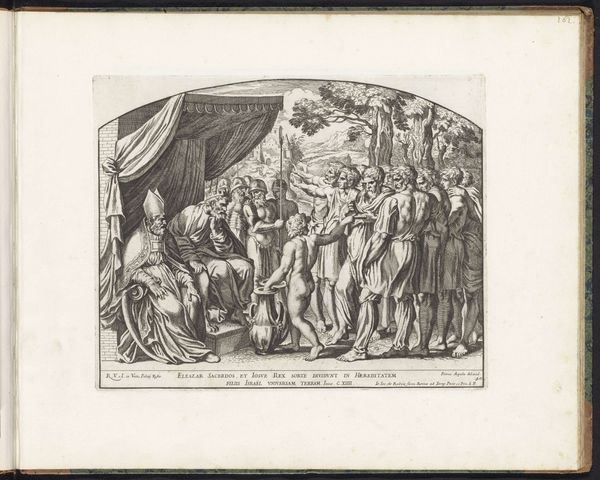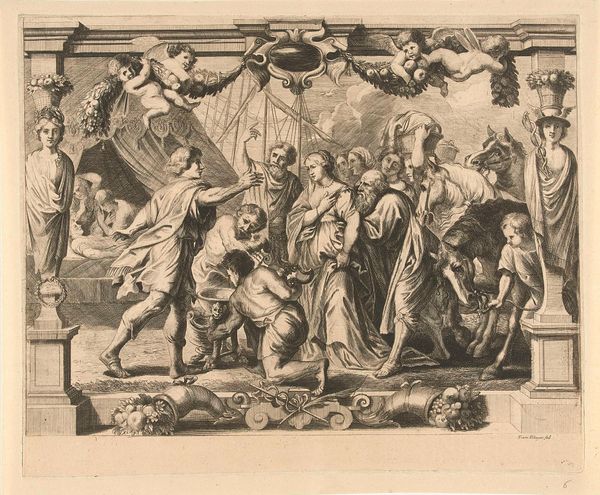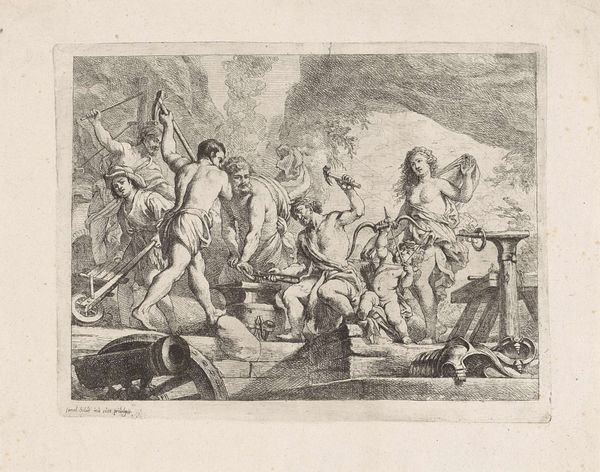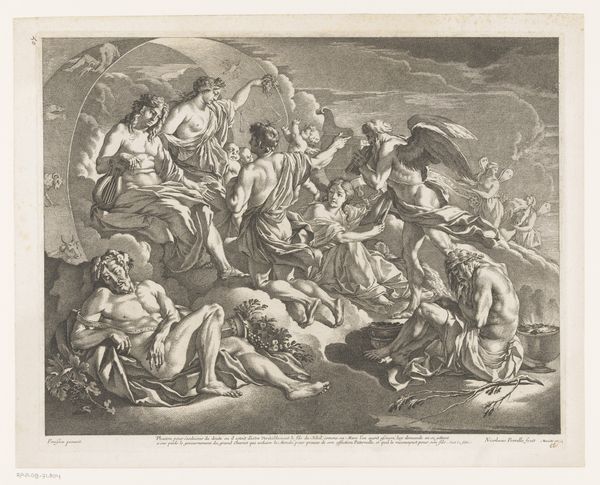
drawing, print, engraving
#
drawing
#
neoclacissism
#
narrative-art
# print
#
charcoal drawing
#
figuration
#
pencil drawing
#
history-painting
#
engraving
Dimensions: height 391 mm, width 530 mm, height 342 mm, width 494 mm
Copyright: Rijks Museum: Open Domain
Editor: This engraving by Luigi Ademollo, *Scènes uit de Trojaanse oorlog,* from between 1774 and 1849, depicts scenes from the Trojan War. The overall effect is quite theatrical, almost like a stage production. What historical narratives are being referenced here? Curator: This is an excellent observation. The work’s neoclassical style directly reflects the period's fascination with ancient Greece and Rome, particularly how these cultures were perceived through art and literature. We must remember that the narratives of the Trojan War were highly influential, serving as moral and political allegories. Editor: Political allegories? How so? Curator: Well, consider the rise and fall of civilizations as portrayed in the *Iliad*. For 18th and 19th century viewers, witnessing depictions of Troy's destruction served as a reminder of the cyclical nature of power. Also, look closely at how Ademollo renders the architecture and the figures' garments, so meticulously and ideally. This precision communicates an explicit message, reinforcing social ideas of the era related to citizenship, virtue, and civic duty. Editor: So, beyond the artistic style, the *content* itself was meant to convey societal messages? Curator: Precisely. Art became a vehicle for transmitting these values and shaping public discourse. Ask yourself how it reflects the museum culture of the time and what statements the artist was trying to make about power and society, don't simply ask what he literally depicted. Editor: It’s fascinating how historical art isn't just about what’s shown, but *why* it’s being shown, and who gets to see it. Curator: Exactly. Understanding that interplay reveals the broader role of art within society.
Comments
No comments
Be the first to comment and join the conversation on the ultimate creative platform.
